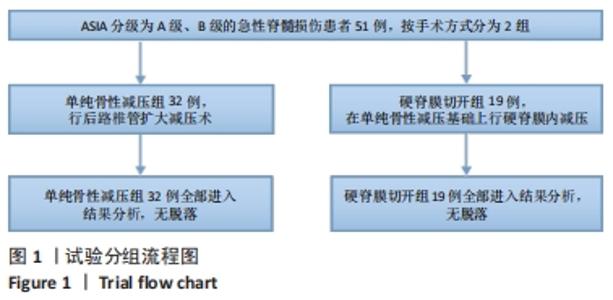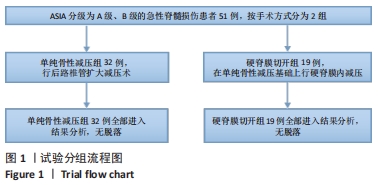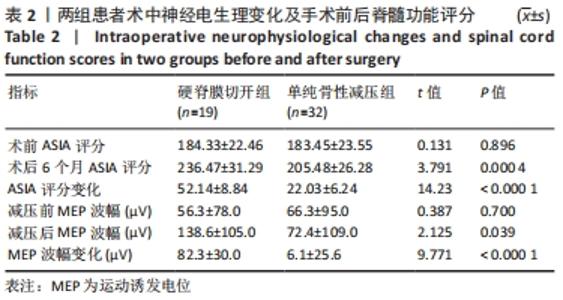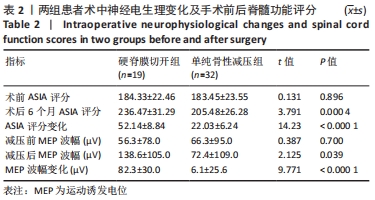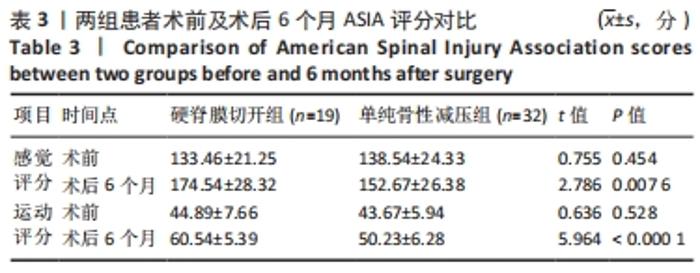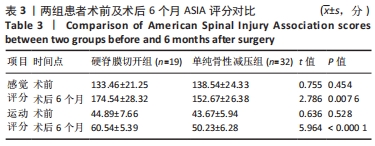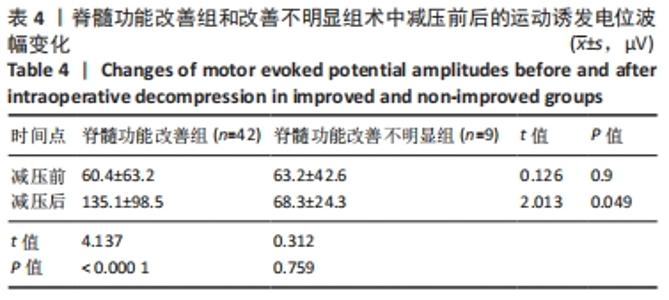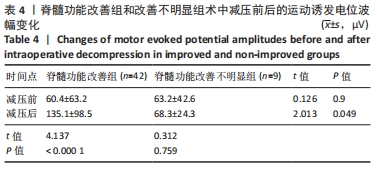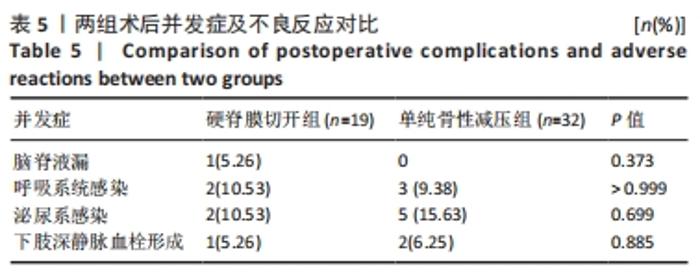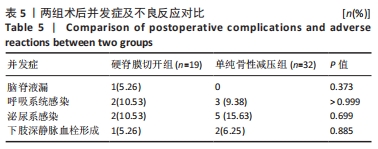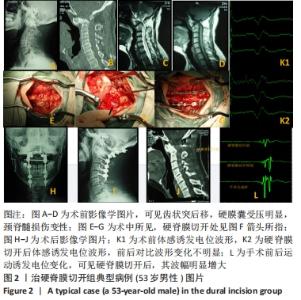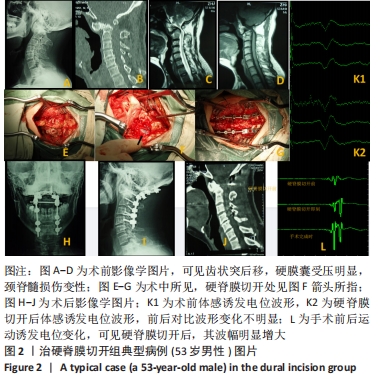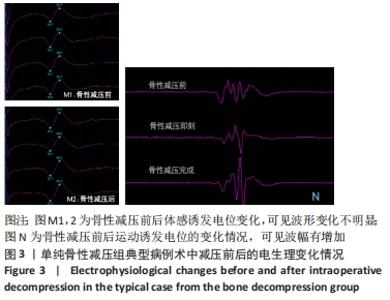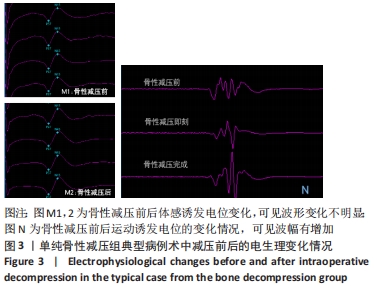[1] DUO Z, HE XJ. Advances in mechanisms of treatment for spinal cord injury with lithium. Zhongguo Gu Shang. 2015;28(7):679-682.
[2] SEKHON LH, FEHLINGS MG. Epidemiology, demographics, and pathophysiology of acute spinal cord injury. Spine(Phila Pa 1976). 2001; 26(24 suppl):S2-S12.
[3] SIDDIQUI AM, KHAZAEI M, FEHLINGS MG. Translating mechanisms of neuroprotection, regeneration, and repair to treatment of spinal cord injury. Prog Brain Res. 2015;218:15.
[4] LI Z, ZHAO W, LIU W, et al. Transplantation of placenta-derived mesenchymal stem cell-induced neural stem cells to treat spinal cord injury. Neural Regen Res. 2014;9(24):2197-2204.
[5] MEYER C, BENDELLA H, RINK S, et al. TThe effect of myelotomy following low thoracic spinal cord compression injury in rats. Exp Neurol. 2018;306:10-21.
[6] 樊洪,郝定均.急性脊髓损伤治疗的研究进展[J].中华创伤杂志,2019, 35(4):340-347.
[7] 封雨,谢佳芯,邓洵鼎,等.急性脊髓损伤显微髓内减压手术治疗研究[J].中华神经外科疾病研究杂志,2017(16):516-519.
[8] 中华医学会.急性脊柱脊髓损伤围手术期管理临床指南[J].中华创伤杂志,2019,35(3):193-198.
[9] 梁兵,董健,唐家广.硬膜囊内减压治疗创伤性脊髓损伤的研究进展[J].中国骨与关节杂志,2016,5(11):853-858.
[10] 杨俊松,郝定均,刘团江,等.急性脊髓损伤的临床治疗进展[J].中国脊柱脊髓杂志,2018,28(4):368-373.
[11] 丁波.硬脊膜切开减压术治疗脊髓损伤后广泛水肿及血肿的体会[J].世界最新医学信息文摘,2016(52):88.
[12] BATCHELOR PE, WILLS TE, SKEERS P, et al. Meta-analysis of preclinical studies of early decompression in acute spinal cord injury: a battle of time and pressure. PLoS One. 2013;8(8):e72659.
[13] 边科砜,张赛,赵永青.神经电生理监测在脊髓损伤手术中的应用进展[J].天津医药,2017(8):63-67.
[14] 刘宏亮.神经电生理检查在脊髓损伤功能评定中的应用[J].继续医学教育,2006,20(30):38-41.
[15] 鲍勇,张潇,潘惠娟,等.神经电生理在临床脊髓损伤康复评定中的应用[J].现代电生理学杂志,2017,24(3):160-163.
[16] JAMES ND, MCMAHON SB, FIELD-FOTE EC, et al. Neuromodulation in the restoration of function after spinal cord injury. Lancet Neurol. 2018;17(10): 905-917.
[17] TATOR CH. Experimental and clinical studies of the pathophysiology and management of acute spinal cord injury. J Spinal Cord Med. 1996;S19(4): 206-214.
[18] LEONARD AV, THORNTON E, VINK R. The relative contribution of edema and hemorrhage to raised intrathecal pressure after traumatic spinal cord injury. J Neurotrauma. 2015;32(6):397-402.
[19] SAADOUN S, BELL BA, VERKMAN AS, et al. Greatly improved neurological outcome after spinal cord compression injury in AQP4-defificient mice. Brain. 2008;131(Pt 4):1087-1098.
[20] 曲延镇,罗政,郭晓东,等.硬脊膜或脊髓切开减压治疗脊髓损伤后广泛水肿伴或不伴髓内血肿[J].中华骨科杂志,2015,35(7):707-713.
|
